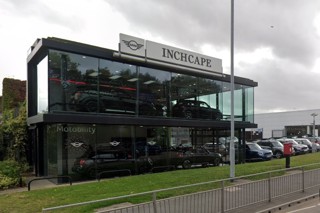AM's regular columnist Professor Jim Saker, director of the centre for automotive management at Loughborough University's business school and president of the Institute of the Motor Industry, shares his thoughts about the UK's continuing geographic imbalance of electric vehicle charging points as consumers are told they'll be only buying electric cars next decade.
In October 2022 Michael Gove was appointed as Secretary of State for Levelling Up, Housing and Communities. Now I am sure he is a very nice person, but he does seem to have a track record of stabbing people in the back, promoting failed ideas and misleading the country by putting figures on the infamous Brexit bus that the UK Statistics Authority described as ‘misleading.’
So, my faith in his ability to achieve anything is limited.
As I understand it, the Government is concerned about the disparity of wealth and opportunity between the north and the south of England. I am not sure what model of levelling up is being used.
Is it a see–saw with the north going up and the south coming down? Or is the north rising up to match the wealth of the south?
As someone who lives in the Midlands, I am bemused that we are either the fulcrum of the see-saw that stays roughly as we are or the soggy bit in the middle of the UK that doesn’t rise at all like a failed attempt in the Great British Bake–Off.
How does this impact our sector? An obvious issue is to do with infrastructure. Everyone says that one of the barriers to the growth in BEV’s is a combination of range anxiety and the lack of charging points.
This is an obvious area where there is a need for a good spread of charging points across the country.
 However, Government figures show nearly a third of charging points are in London, and Westminster has more than Liverpool, Manchester, Newcastle, Leeds, Sheffield and Birmingham combined. So, one London Borough has more charging points than the whole of what has been described as the ‘northern powerhouse.’
However, Government figures show nearly a third of charging points are in London, and Westminster has more than Liverpool, Manchester, Newcastle, Leeds, Sheffield and Birmingham combined. So, one London Borough has more charging points than the whole of what has been described as the ‘northern powerhouse.’
This disparity is undoubtedly driven by the London congestion charge and the desire of people who need to drive in central London to avoid additional costs. The problem is that in making BEV’s attractive by zero rating them causes the additional problem of attracting more of them into central London causing congestion.
The latest average speed reported by Tom Tom’s Traffic Index for the London rush hour was 9 mph. If you are going to spend most of your time stationary it probably makes sense not to have an engine ticking over.
The problem becomes a bit chicken and egg. How do you level up the north with the south?
Would the demand for electric vehicles and charging points go up if ‘the north’ imposed congestion charges in all its cities and the traffic slowed down to London speeds?
One would suggest that turning the north into a congested 10 mph car park would be a type of levelling up that might want to be avoided.
The problem is that I fear that Gove with his previous use of data during the Brexit campaign might think that this looked good and announce that he had achieved his objective.


















Login to comment
Comments
No comments have been made yet.